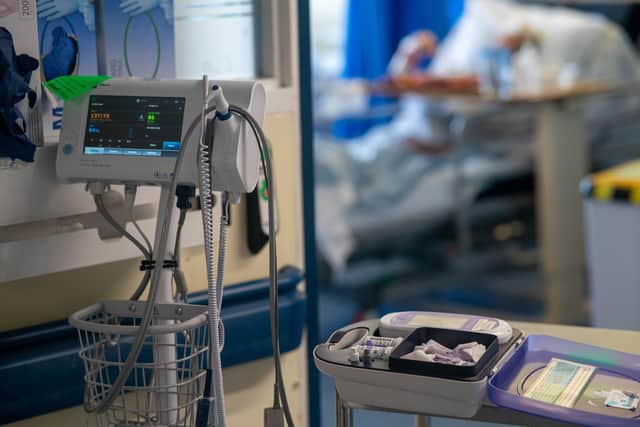Fewer beds occupied at Wigan's hospitals – despite post-pandemic high across England
and live on Freeview channel 276
A think tank has warned high levels of occupancy can lead to worse patient care in hospitals.
Figures from NHS England show 74.2 per cent of 673 overnight beds were occupied at Wrightington, Wigan and Leigh Teaching Hospitals NHS Foundation Trust (WWL) in the three months to March.


Advertisement
Hide AdAdvertisement
Hide AdThis was a fall from of 78.9 per cent compared to a year before.
Despite this, across England occupancy rates rose in the last quarter, reaching 89.8 per cent – just shy of the record of 90 per cent in March 2018.
For general and acute settings, this figure was 92.3 per cent – the highest rate since the pandemic began.
Sarah Scobie, director of research at the Nuffield Trust think tank, warned a lack of beds could "lead to dangerously busy and difficult conditions" in A&E departments, waiting rooms and corridors.
Advertisement
Hide AdAdvertisement
Hide Ad"Frequent high levels of beds in use have contributed to record waiting lists we are seeing now, and there is also evidence that overcrowded hospitals increase risks to patients and link to higher rates of mortality," she added.
Ms Scobie urged for greater long-term investment in buildings and equipment, alongside improving care services outside hospitals.
The figures show 74.5 per cent of beds in acute settings at WWL were filled in the three months to March.
A Department of Health and Social Care spokesperson said: "Cutting waiting lists is one of the Government’s top five priorities and we are investing up to £14.1 billion in health and social care over the next two years, on top of record funding.
Advertisement
Hide AdAdvertisement
Hide Ad"Waiting times have substantially reduced from the peak of winter pressures in December and the NHS has set out ambitious plans to improve access to care. This includes delivering 5,000 additional permanent hospital beds for next winter as well as an extra 3,000 virtual ward beds to safely care for people from home, resulting in over 10,000 in total by autumn."
"Over the next two years we are also investing £1.6 billion to support timely and safe discharge of people from hospital into the community," they added.